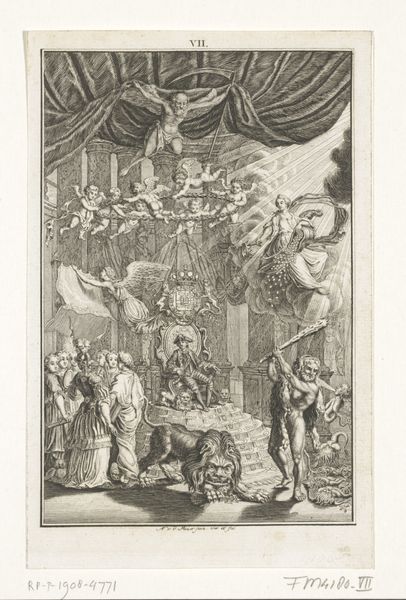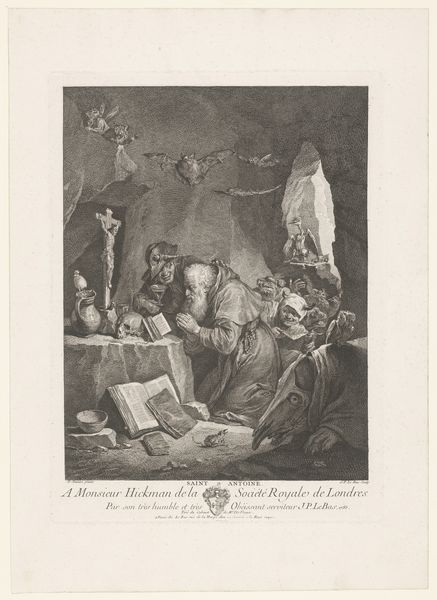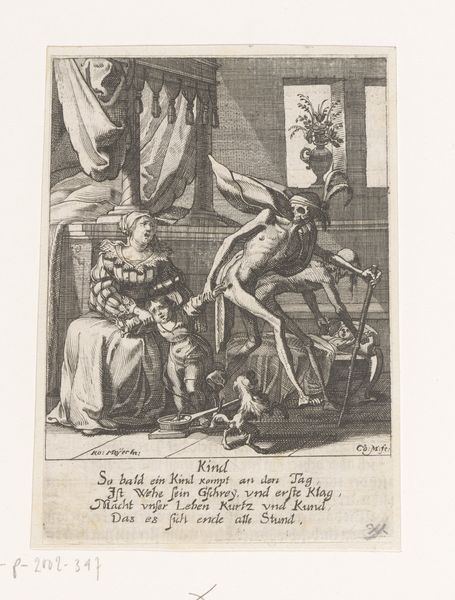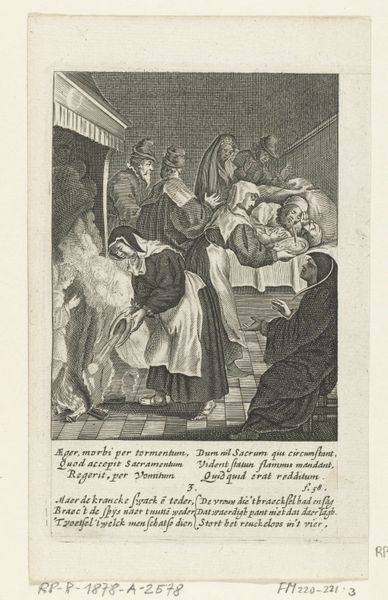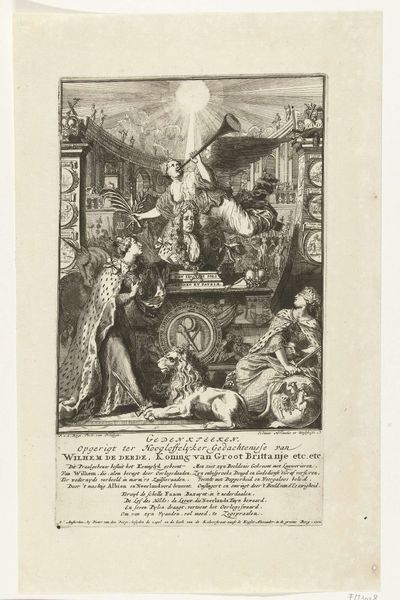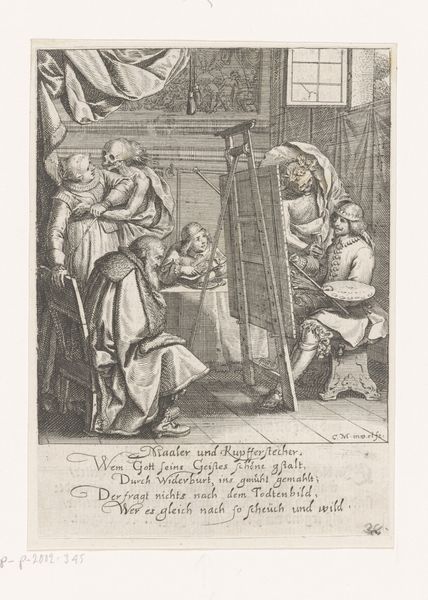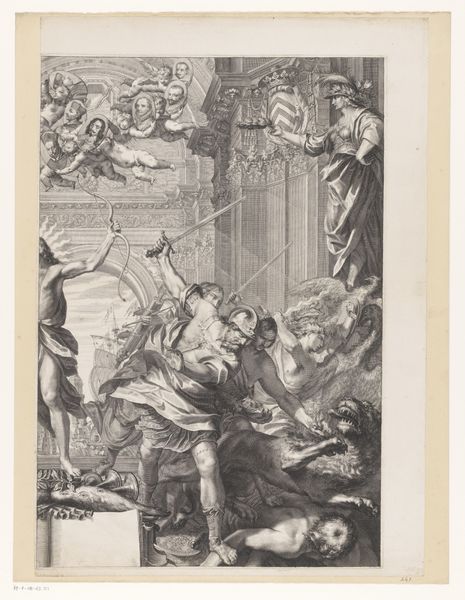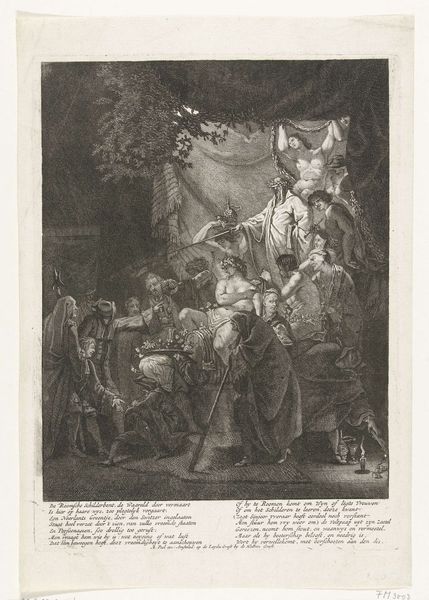
print, engraving
#
allegory
#
narrative-art
#
baroque
#
ink paper printed
# print
#
figuration
#
genre-painting
#
history-painting
#
engraving
Dimensions: height 149 mm, width 106 mm
Copyright: Rijks Museum: Open Domain
Curator: “Geldlener en deurwaarder met de Dood,” Conrad Meyer, circa 1650, printmaking medium. I am immediately struck by the allegorical aspects depicted, the Memento Mori motif. What grabs your attention in this piece? Editor: Well, the Death figure is hard to miss. It feels theatrical, almost baroque, with that exaggerated pose and dramatic lighting. There are many symbolic objects around the scene that suggest a narrative that I am not getting. How do you interpret this work in its historical context? Curator: Meyer’s work engages with the prevalent anxieties surrounding wealth, mortality, and divine judgment during the Baroque era. It's intriguing to consider how the socio-economic climate might have shaped its creation. Consider the political undertones within such representations of death and morality, during a period marked by social unrest and religious conflicts. It speaks to the precarious nature of wealth. What statement do you think Meyer wanted to address here? Editor: Possibly the artist meant to showcase the social structures, such as money lending, highlighting how easily the lower class can be consumed in Baroque society. How common were themes like these for artwork in that era? Curator: These allegories were a powerful way to explore contemporary ethical debates and reflect social and cultural shifts. Consider also the impact of printmaking as a democratic medium on disseminating moralizing messages to a wider audience. Editor: Thank you. I realize how limited my perspective was on the artist’s intention and on Baroque socio-cultural values, when approaching artwork as an audience. Curator: I agree. Now you see it through the public function that visual arts adopted!
Comments
No comments
Be the first to comment and join the conversation on the ultimate creative platform.
